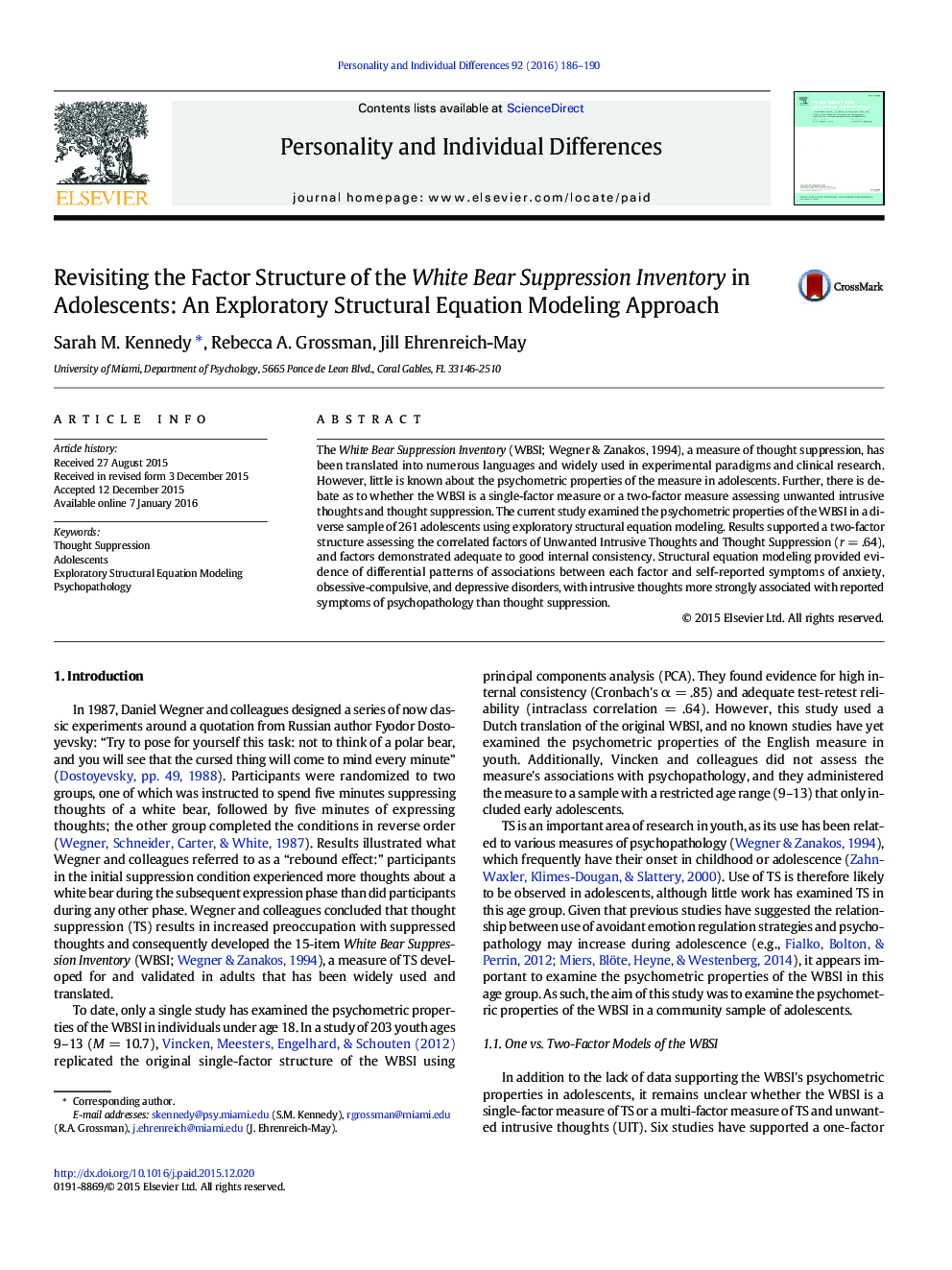| Article ID | Journal | Published Year | Pages | File Type |
|---|---|---|---|---|
| 889808 | Personality and Individual Differences | 2016 | 5 Pages |
•Examine the factor structure of the White Bear Suppression Inventory in adolescents•Exploratory structural equation modeling used to examine 1 and 2 factor solutions•Two factor solution (intrusive thoughts and thought suppression) best fits data•Intrusive thoughts are more strongly associated with self-reported psychopathology•ESEM may be a more flexible approach to factor analysis than EFA or CFA models
The White Bear Suppression Inventory (WBSI; Wegner & Zanakos, 1994), a measure of thought suppression, has been translated into numerous languages and widely used in experimental paradigms and clinical research. However, little is known about the psychometric properties of the measure in adolescents. Further, there is debate as to whether the WBSI is a single-factor measure or a two-factor measure assessing unwanted intrusive thoughts and thought suppression. The current study examined the psychometric properties of the WBSI in a diverse sample of 261 adolescents using exploratory structural equation modeling. Results supported a two-factor structure assessing the correlated factors of Unwanted Intrusive Thoughts and Thought Suppression (r = .64), and factors demonstrated adequate to good internal consistency. Structural equation modeling provided evidence of differential patterns of associations between each factor and self-reported symptoms of anxiety, obsessive-compulsive, and depressive disorders, with intrusive thoughts more strongly associated with reported symptoms of psychopathology than thought suppression.
